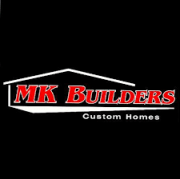We’re all guilty of taking our roof for granted. It offers us tried and true protection from the elements and ensures our families are safe and warm all year round. But what about when a storm strikes and you’re forced to repair or replace your roof?
It might happen when you least expect it, so it’s vital to know what to do first. And that is filing an insurance claim to get your roof replacement covered.
Insurance claims can be complex, so we’re here to help you navigate the process and ensure you get your new roof paid for.

How to Know if You Need a Roof Replacement
First, let’s go over the signs of needing a roof replacement. Some signs can be caused by storm damage, and others may just be signs of an aging roof. But for the most part, insurance will not cover anything besides sudden and accidental damage, such as storm damage from hail or strong winds.
If you notice any of the following issues after a strong storm, you may need to take the appropriate steps to file an insurance claim for roof replacement.
Missing or Loose Shingles
Shingles that are missing or loose after a storm could indicate damage. If the shingles on your roof are starting to go, it’s best to replace them before they cause any more damage. Because once those shingles are gone, your roof is immediately susceptible to water leaks.
Water Spots on the Ceiling
If you’ve been experiencing water leaks inside your home, especially after a storm, there is likely damage to your roof or an issue in the attic.
Visible Granule Loss
Granules are your shingles’ first line of defense against the elements. They’re the top layer of a shingle that protects against rain, wind, hail, etc. If you notice granules in your gutters or downspouts after a hailstorm, you should get a roof inspection.
Sagging Roof
A sagging roof could be an indication of damage or age. If it seems like your roof is sagging, it’s best to call a professional for an inspection.
Damaged Flashing
Flashing is the metal that goes around your chimney, pipes, or anywhere on your roof where there are seams. Damaged flashing can cause leaks in your home if not addressed immediately.
Loose Debris on Your Roof
If you notice branches, twigs, or other large debris on your roof, it can be a good indicator that your roof was damaged. When large debris like overhanging branches falls onto your roof, those granules can slough off, or shingles can crack or come loose under the impact. So if you see debris on your roof, you should get a thorough inspection right away.
Dented, Hail-Damaged Shingles
Hail can cause a lot of damage to your roof, and if it’s severe enough, the insurance company may deem it an Act of God (yes, that’s an actual insurance term). If you have visible hail damage on your shingles, take pictures and document it as best as possible, and get a professional inspection. If hail damage is bad enough, you may also want to get the roof tarped while you wait for repairs or replacement.
Clogged or Broken Gutters and Downspouts
Clogged gutters and downspouts can cause significant issues for your roof. When there’s a clog in the drainage system, water can back up onto the roof and seep into any crack or seam. Additionally, if you have broken gutters or downspouts, it could be an indication of damage to your roof as well.
Now that you know some of the signs let’s go over how to file an insurance claim for roof replacement.

Getting Insurance to Cover Your Roof Replacement or Repairs
Many homeowners are unaware that their standard homeowner’s insurance policy includes wind and hail damage protection. This means that if a storm hits and damages your roof, chances are you’ll receive coverage.
But some things are not covered under standard policies, and knowing what those are can help avoid surprises when you file. Things like wear and tear or failed DIY repairs will not be covered and could even void any potential coverage if your roof wasn’t in good condition before it received storm damage.
There are some key things to know to get insurance to cover your roof replacement, and we’ll detail them below.
Know Your Policy and What Should Be Covered
Raise your hand if you’ve skimmed over a policy without really reading it, then signing it anyways (reluctantly raises hand). This can be a big mistake when it comes to your homeowner’s insurance.
There is a lot of fine print and many circumstantial coverages that you will definitely want to know about when you need it most. When you first buy your home, you should read through your policy closely, highlighting important areas that can be easily referenced when you file a claim. You should also add on additional critical coverage such as flood or earthquake insurance if you live in areas with a higher likelihood of those events.
A standard insurance policy will frequently cover roof damages from the following:
- Lightning
- Fire
- Smoke
- Hail
- Wind
- Falling objects/debris
- Freezing
- Vehicles or aircraft
- Collapse from excess weight
- Sudden or accidental pipe bursts, electrical surges, or steam
Typical roof damages NOT covered under a standard insurance policy:
- Earthquakes
- Floods
- Animal or insect infestation
- Wear and tear
- Negligence
- Smog
- Rust or corrosion
- Warping or settling from your foundation
Document the Damage
If you sustained storm or other accidental damage to your roof that you believe needs repairs or replacement: document, document, document. The more photos and documentation you can get after it just happened, the better off you may be for getting proper coverage.
Insurance adjusters or your contractor will also document damages when they do their inspection, but for peace of mind and security, you can document it yourself as well. This can help fight against any fraudulent repairs or estimates given to you by less-than-trustworthy contractors. We’ll cover some tips for avoiding scams in a little bit.
Documentation of damages can look like:
- Photos
- Video
- Handwritten notes
- An inspection separate from insurance
- Before and after photos (if available)
- Eye witness reports
The more information you can gather, the better off you’ll be in getting insurance to pay for your roof replacement. Smartphone pictures and video should suffice if you don’t have a point-and-shoot camera.
When you inevitably end up hiring your contractor, they can keep a record of the documentation you made and add it to the photos and videos they’ll collect during their own inspection.
Contact Your Insurance Company ASAP
When a storm strikes, time is of the utmost importance. The longer you put off filing your claim, the more at risk your home becomes to leaks and other damage, and the less likely you will get full coverage.
Like we stated above, negligence can void any coverage if you put off making repairs for weeks, months, or years after the damage occurred. So act fast!
Some tips for filing your insurance claim include:
- Make sure to read through your policy carefully, so you know what is covered before your begin.
- If possible, find an insurance adjuster who has experience with roof replacements.
- Be clear and concise in your explanation of the damages
- Include photos and video.
- Keep track of all paperwork, including estimates and invoices.
- File your claim as soon as you can.
- You can make your claim simultaneously with finding a contractor to inspect your roof as well.
- OR wait to work through it with your contractor.
Find a Reputable Roofing Contractor
That brings us to our last tip for getting insurance to cover your roof replacement. It’s essential to do your research and find a reputable contractor who has good work history. A trustworthy person will also willingly help you navigate the complicated process of filing an insurance claim.
If they’ve been around awhile, chances are they’ve worked with just about every insurance company with every level of damage. They, of course, want to support you in getting your new roof covered and can alleviate a lot of stress by working in tandem with you and your insurance company.
Some tips for finding a good-standing, reputable roofer include:
- Asking for referrals from friends, family, or neighbors
- Checking reviews online
- Checking out photos of previous projects
- Read testimonials on their website (if applicable)
- Find contractors with excellent warranties (workmanship and manufacturer)
- Checking out local roofers
- Hiring Apple Roofing

Roofing Insurance Scams: How to Spot Storm Chasers
In order to choose the best contractor, you may need to wade through some bad roofers to get to the good stuff. And part of the search might include avoiding scams.
After a big storm, fly-by-night contractors or storm-chasers will flock to the area and offer fast, cheap roofing repairs. They take advantage of vulnerable homeowners who have experienced bad weather and potential damage and take their money and run.
Luckily, there are some tell-tale ways to spot a storm chaser or roofer trying to scam you. There are some obvious signs that someone is a storm chaser, such as:
- They’re physically knocking on your door after a storm. This means they’ve probably seen on the news or tracked a storm to the area and thought they’d try their luck finding homeowners in the path of the storm.
- They are offering a too-good-to-be-true deal on repairs.
- They don’t have a business card or website to show you.
- They ask for payment upfront to get started.
- They offer to pay your deductible.
- They make up damage, which is all the more reason to do an inspection and document your property right away.
Storm chasers are just there for a quick buck. They may or may not be decent contractors, but their tactics are sketchy, and the speed at which they do the work can affect the quality.
Suppose you find yourself skeptical of a roofer you’ve contacted or have opened your front door to a contractor offering roof repairs services without even inspecting your roof. In that case, you can ask these critical questions:
- How long have you been in business?
- Can I see your website?
- Where are you located?
- Do you have a physical address?
- Can I see some of your workmanship?
- Are you licensed and insured?
- How much will this repair cost me in the end?
If they can’t answer any of these questions, or if their answers make you suspicious, it’s probably best to move on with finding a reputable contractor nearby.
Tips for Prolonging the Lifespan of Your Roof
It’s important to take some preventative measures so that the lifespan of your new roof is as long as possible. Because wear and tear and neglect of your roof can hurt you when it comes time to get the coverage you need when disaster strikes, you must maintain your roof to keep it in good condition.
- One way to do this is by having regular maintenance and inspections done on your roof. This will help identify any potential problems before they become a more significant issue.
- You should regularly clean out your gutters and downspouts.
- Keep an eye on your roofline and shingles for curling, buckling, or missing pieces.
- Make sure trees near your house aren’t rubbing up against your roof.
- If you have a skylight, make sure it’s properly sealed and caulked.
- If you have a chimney, make sure the flashing is in good condition and that the mortar around it is fresh.
- When or if you clean your roof, be careful not to damage the shingles. Try soft washing or just rinsing off with water vs. pressure washing.
- Ensure proper insulation in your attic and roof.
- Always hire a professional to do large-scale repairs when needed.
Finding the Right Contractor for the Job
When you’re in the market for a new roof compensated by insurance, it’s important to find the right contractor for the job. Apple Roofing has the experience and attention to detail to pinpoint damages, determine the actual condition of your roof, and get it replaced with a better, more secure roof than you started with.
For a thorough inspection and to schedule your roof replacement, work with a team who will help you navigate the insurance claims process and offer clear expectations without leaving you in the dark. Trust Apple Roofing to get the job done right.



















